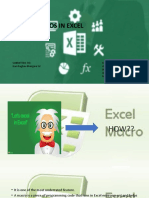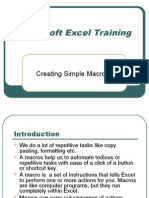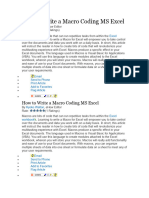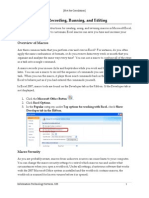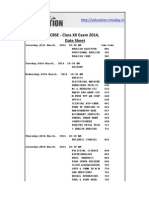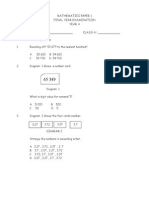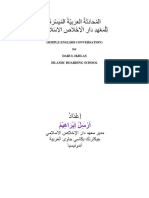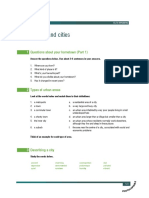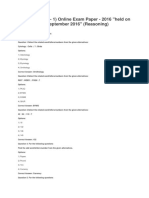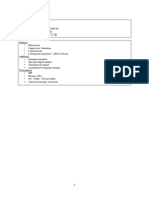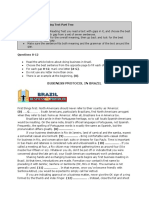0% found this document useful (0 votes)
56 views4 pagesMacro Notes
This document provides an overview of using macros in spreadsheets, specifically in LibreOffice. It covers the definition of macros, how to record and run them, and the rules for naming them, along with examples of creating and organizing macros. Additionally, it explains how macros can function as reusable functions for repetitive calculations.
Uploaded by
keerthana.rajendra7Copyright
© © All Rights Reserved
We take content rights seriously. If you suspect this is your content, claim it here.
Available Formats
Download as PDF, TXT or read online on Scribd
0% found this document useful (0 votes)
56 views4 pagesMacro Notes
This document provides an overview of using macros in spreadsheets, specifically in LibreOffice. It covers the definition of macros, how to record and run them, and the rules for naming them, along with examples of creating and organizing macros. Additionally, it explains how macros can function as reusable functions for repetitive calculations.
Uploaded by
keerthana.rajendra7Copyright
© © All Rights Reserved
We take content rights seriously. If you suspect this is your content, claim it here.
Available Formats
Download as PDF, TXT or read online on Scribd
/ 4














